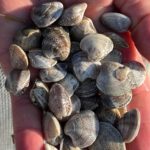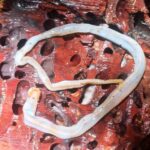In Thailand, four mudskipper species can be found. These are the Giant mudskipper (Periophthalmodon schlosseri), Blue-spotted mudskipper (Boleophthalmus boddarti), Gold-spotted mudskipper (Periophthalmus chrysospilos) and the Indian Dwarf mudskipper (Periophthalmus novemradiatus).
The Giant- and Blue-spotted mudskippers live at the Andaman Sea- and Gulf of Thailand coastline. The Gold-spotted mudskipper is restricted to the Andaman Sea and the northernmost coast of the Gulf of Thailand. The Indian Dwarf mudskipper settles around the Ranong area.

They are all amphibious fish living in muddy estuaries and tidal brackish river zones around Asia-Pacific. They live in about 40 cm deep holes in the mud and emerge, preferably on sunny days at low tide. All of them can breathe in and out of the water.

How to catch mudskippers
The best time to catch mudskippers is in the colder months of the year, from December to February. At that time, they have lots of firm meat, which will smell less fishy. Mudskippers can be best caught either by cast nets, hand nets, or caught by hand. Catching by cast- or hand nets is self-explanatory, and hand catching should be further described. First, a prospective area has to be sought out at low tide, with various mudskipper holes. These mudskipper holes are considerably larger than the mangrove crab holes.
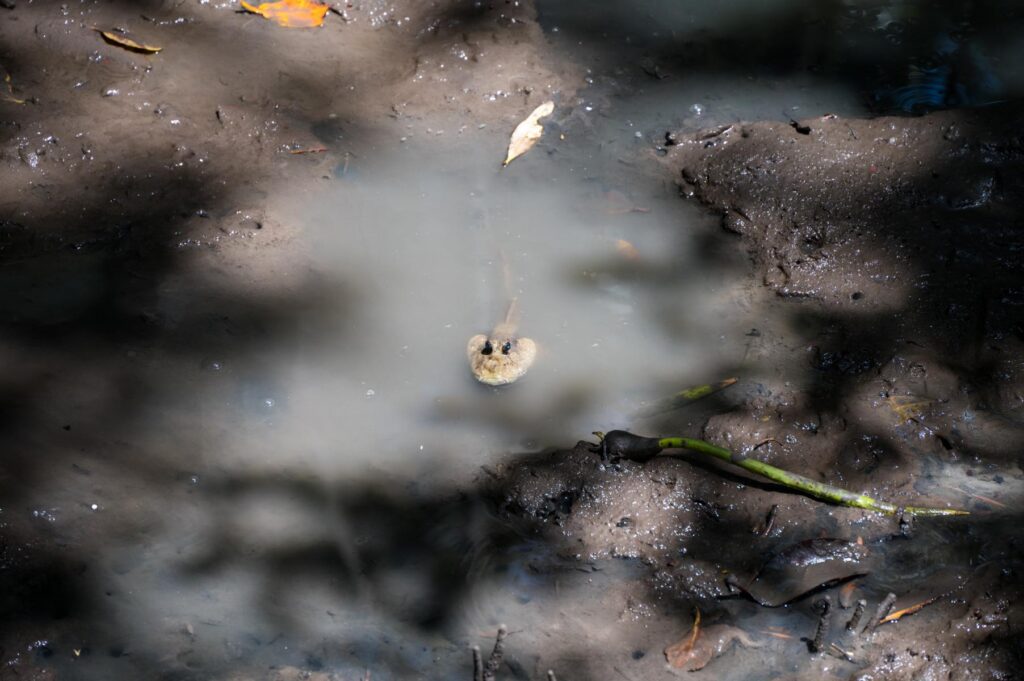

Next, one must either strip down and protect the body against the sun with a mud layer or wear old clothing, as this clothing will get very muddy. The only necessary implement is a bucket to collect the skippers.
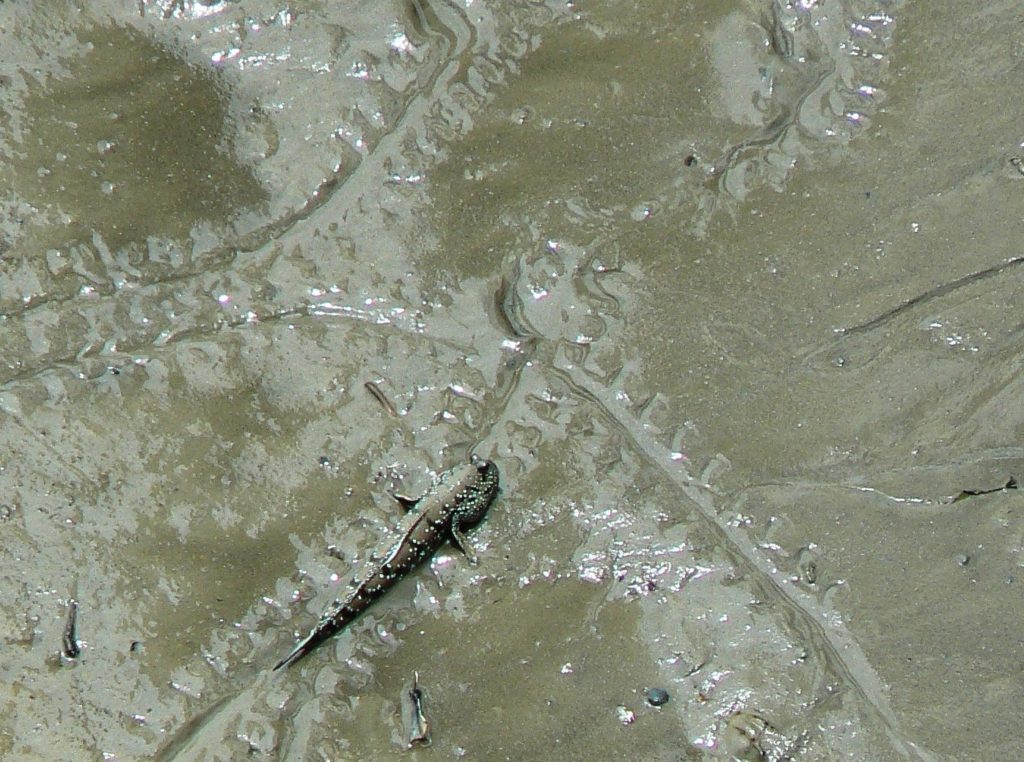
By sticking the hand deep into the holes, mudskippers can be caught easily and just put into the bucket. When catching, their heads should be gripped in front of the pelvic fins/legs.
And, if a crab is biting a finger?
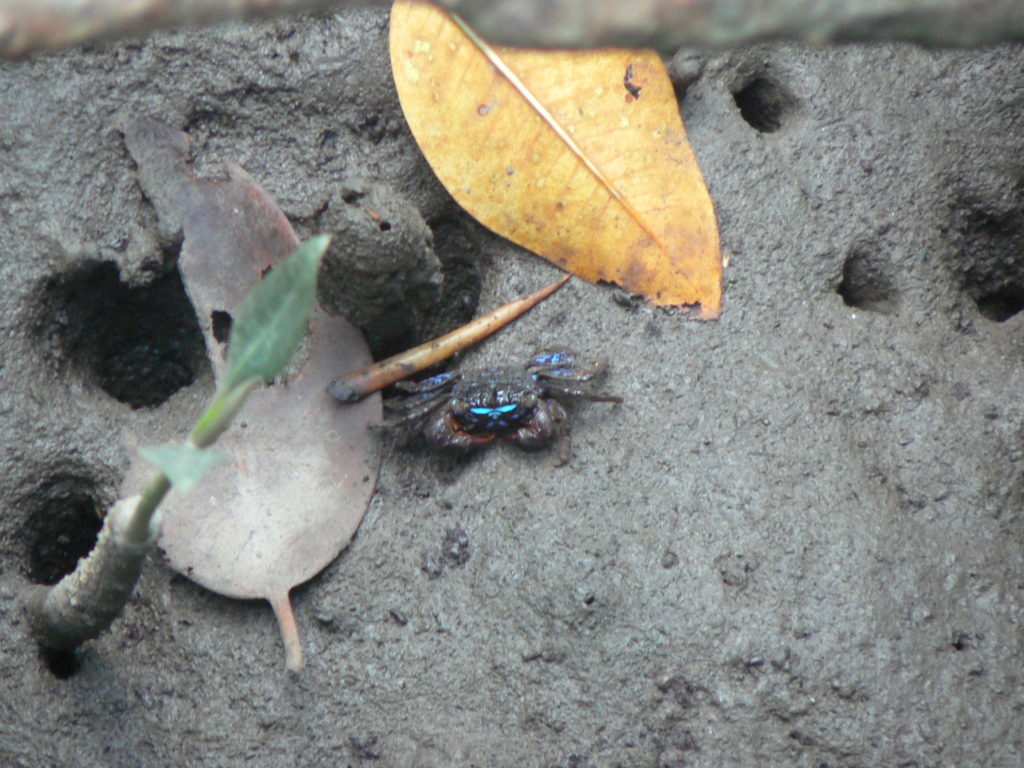
In case of misfortune – meaning a crab hides in a mudskipper hole – despite the pain, the crab should not be ripped off the finger, but the pinching claw should be broken off the crab. Only after that, the claw should be pried open by a buddy or yourself. Otherwise, nasty cuts could develop, whereas by breaking off the claw separately, only pinched holes remain.
Mudskippers on the table
Before cooking, the fish is put into a closed pot with lots of salt (and sometimes ice), which kills it. After that, it is gutted, washed, and seasoned. Usually, mudskippers are grilled on a skewer of coconut frond-midrib until black on the outside. They have white meat with excellent taste and texture.
Lessons learned about mudskippers for food.
- Catching mudskippers with nets is relatively easy.
- Hand catching is suitable for an emergency, but – at least the author – doesn’t like to get pinched by crabs.
- In some cultures, it is still common practice to stick live mudskippers on skewers and grill them.
- In case mudskippers were killed humanly and the googly eyes were gone, they would taste tremendously good grilled and well-seasoned.
.




